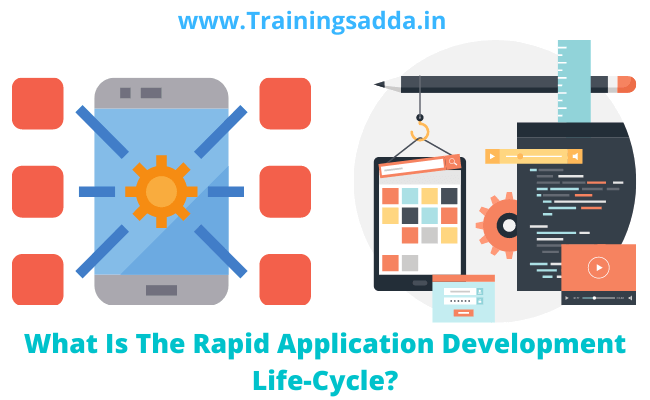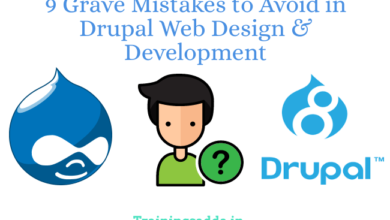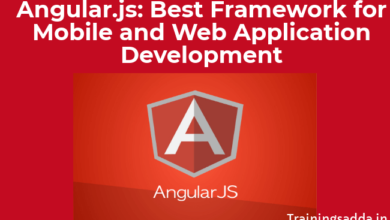What Is The Rapid Application Development Life-Cycle?

Rapid Application Development is a form of app development methodology. It is however different from traditional coding as it prioritizes rapid prototyping and iterations. RAD gives priority to the rapid release of prototypes and iterations. This makes it easier for developers to rapidly create, fine-tune or even alter elements of the model.
This app development methodology is, therefore, more agile with the key advantage of giving projects a quick turnaround. Rapid Application Development is therefore an attractive choice especially for software developers who work in a fast-paced environment. Also, RAD focuses on abating the planning time while capitalizing on prototype development.
See more: Angular.js: Best Framework for Mobile and Web Application Development
RAD model, therefore, follows a cyclical flow for more efficient app delivery. This is done in what is referred to as a Rapid Application development lifecycle. This makes it easier for stakeholders to measure progress accurately as well as be able to communicate on evolving issues as they occur. In this article, we focus mainly on the key phrases that form part of the life cycle.
Table of Contents
Rapid Application Development Lifecycle
This is the process of delivering applications with the RAD model and involves several related phases that work as a whole to aid complete development, testing, and commissioning of applications. The key steps in a typical RAD model are divided into:
- Requirements planning phase
- Designing
- Development
- Cutover
Requirements Planning
Similar to the scoping stage of any project, this RAD phase is referred to as the planning phase. It is done at the onset of a project and is very crucial as it determines the project success score.
Know more: What is The Career Scope for Android App Development in India?
At this stage, software users or clients, developers, and team members sit together and make shared decisions on the expectations and goals of the project. These suggestions would then be fully addressed during the app-building stage.
Remember, if you fail to plan, the project outcome may not wholly reflect the goal. It is therefore advisable that stakeholder engagement and proper planning be done at the onset.
The planning stage can be broken down into three subsections:
- Problem identification
- Defining project requirements
- Stakeholder approval
This phase ensures that every stakeholder has input on the goals of the project, understands the problem and project requirements, and approves of the requirements. This reduces the cost of communications and change-orders deep into the project.
User Design
Once the project is scoped and approved, designers develop the roadmap while working closely with developers. This phase is very important and is what sets RAD apart from the other models. RAD approach is based around flexibility and the ability to adapt alongside new knowledge, without clear designs, it is true resources and time can be wasted without delivering workable prototypes.
Know more: Top 5 Do’s and Don’ts For UX Approach in Mobile App Development
Here, developers design prototypes, and users test them. Once this is done, users and developers sit down to communicate results especially on what didn’t work, and what worked. Designers then use this feedback to tweak the model until a satisfactory design is obtained. Both clients and developers, therefore, learn from the experience and can keep the project in good shape in line with their expectations.
Rapid Development
This phase takes prototypes from the design phase and converts them into models that are ready for deployment. Because a large number of changes have been addressed in the design phase, developers construct working models more rapidly.
The key stages of rapid development include:
- Preparation for rapid development
- Software development
- Coding
- Integration and system testing
Here, several codes are written before the actual product is delivered. The phase is sometimes known as the programming phase because the many coding procedures are carried out here. Besides, it is this phase that delivers a noticeable product.
It is important to remember that users still get opportunities to give feedback on the model delivered and the information is being used to adjust or improve the prototypes. Further testing is done and adjustments are made until the application is considered complete. Once the product is fully embraced by uses and developers, it is rolled out.
Also Read: Why your business needs QA Automated Software Testing Services?
Cutover
Cutover is the final stage of the RAD life-cycle. It involves user training, data conversion, changes over to the new system, and application maintenance.
Maintenance may include fine-tuning or even the addition of missing or extra features to scale it up. And this is precisely the motive behind flexible designs.
Comments
0 comments




